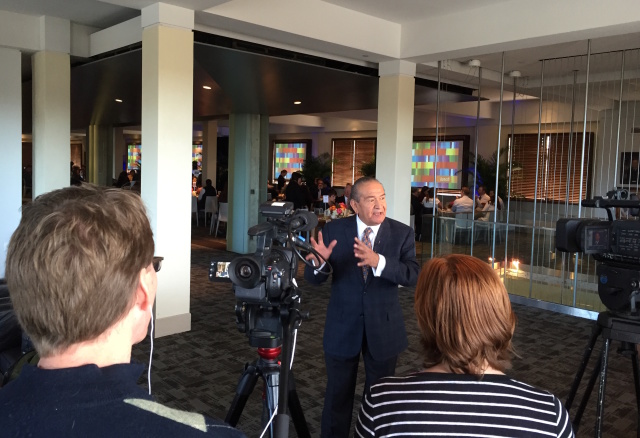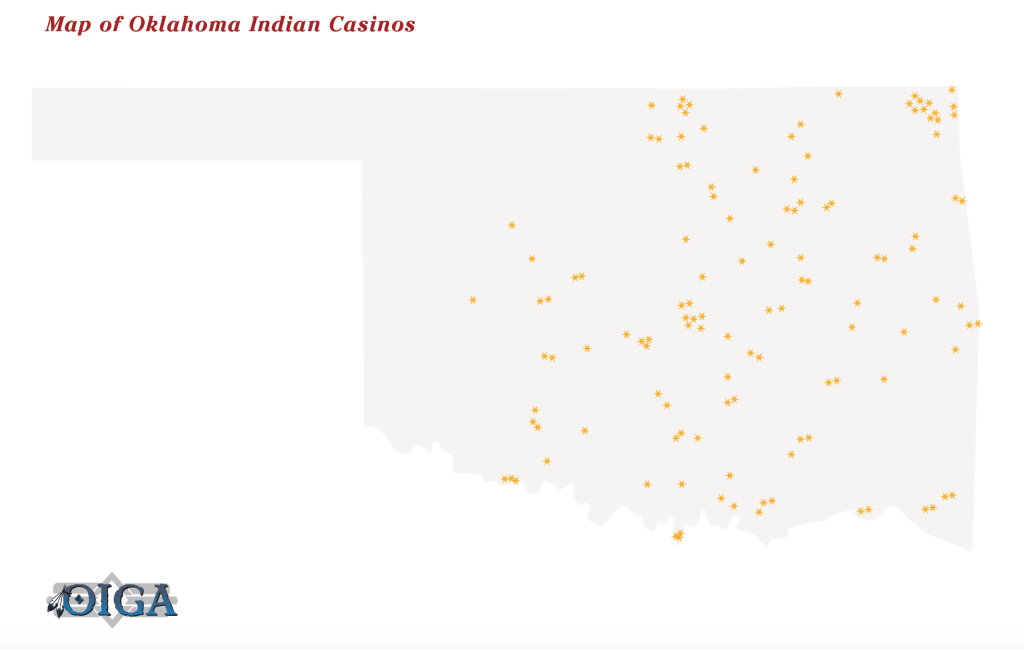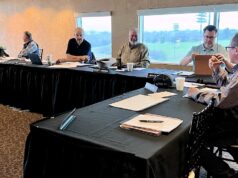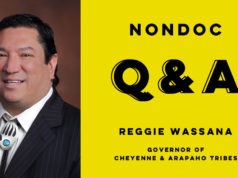
The state of Oklahoma is home to so many electronic gaming casinos that, as of early November, a comprehensive list of the gambling establishments did not exist, according to the Oklahoma Indian Gaming Association.
The OIGA, however, released a comprehensive list of Oklahoma casinos Tuesday in its first-ever “impact report.” While they do not include addresses, the results paint an impressive picture across Oklahoma: 30 tribes owning 124 often-enormous casinos, many of which did not exist even five years ago.
(The Oklahoma Department of Tourism’s website lists 93 casinos and non-Indian-owned racetracks.)
The Oklahoma State-Tribal Gaming Act was passed into law by 59 percent of voters in 2004.
At a Tuesday luncheon for the impact report, gaming leaders touted how total state revenue from tribal gaming has reached the $1 billion mark over the past 10 years.

By contrast, total tribal gaming revenues for 2014 alone are estimated in the report to have been about $4.2 billion in the state.
“I think as people who represent tribes and tribal organizations, we would hope that the partnership that is between the state and the tribes with respect to Class Three gaming will continue,” said William Norman, an attorney for Hobbs Straus Dean & Walker.
Norman said he represents the Absentee-Shawnee tribe and the Wichita and Affiliated Tribes, and he spoke at Tuesday’s OIGA event.
“It works, it has worked to the benefit of both (tribes and the state of Oklahoma),” Norman said after the room had cleared. “We have seen considerable benefit both in the local communities and at the state level, and we hope they would continue to allow that to happen.”
Follow NonDoc:
The federal Indian Gaming Regulatory Act defines three classes of tribal gaming, but until the Oklahoma State-Tribal Gaming Act passed in 2004, only Class One and Class Two gaming were legal in Oklahoma.
Class One includes ceremonial gaming, while Class Two primarily includes bingo and customer v. customer card games.
On the other hand, Class Three gaming includes gambler’s most enticing options: card games — like blackjack and poker — against the house; roulette; craps; traditional slot machines.
The $1 billion figure announced by the OIGA refers to “exclusivity fees” paid to the state of Oklahoma by any tribe operating Class Three gaming.
For those fees, casinos pay the state 4 percent of the first $10 million in net-win revenues, 5 percent of the second $10 million and 6 percent of anything above $20 million.
Class Two games require no exclusivity fees, and many gamblers may not know that Class Two slot machines can stand right next to Class Three machines in the same casino.
(The Class Two machines have a small bingo card in the corner of the screen, meaning the user is actually playing bingo while watching a slot-machine-style presentation.)
Comanche Nation Tribal Chairman Wallace Coffey attended Tuesday’s data release at the Gaylord-Pickens Museum in Oklahoma City.
“We’re doing really good,” he told reporters. “We’re contributors not only to the economy but also employees. Probably 60 percent of our employees are non-natives, so we’ve benefited the community by a tremendous amount, and we provide health benefits to our employees.”
Coffey bragged on Comanche casinos being at 100 percent capacity on weekends and 70 percent during the week. He mentioned vast capital and programatic improvements afforded to his tribe by gaming revenues, and he mentioned a new “I Am Indian” youth project. He said he’d like the nation to have a radio station.
“I’m trying to be a good neighbor,” he added about a recent positive meeting with military men at Fort Sill in Lawton. “As simple as that.”
OIGA executive director Sheila Morago said her organization’s impact report is intended to measure the industry’s effects and will be released annually moving forward.
“The gaming revenue here in Oklahoma is strong,” Morago said. “We are the third-largest revenue generator in the country only behind Nevada and California. We are the only state in the country that has not taken a dip in terms of revenue during the recession, and we continue to climb. So as far as projections, I see a bright future.”
The Cherokee Nation highlighted its own economic “impact” in a press release following Tuesday’s event.
“The Cherokee Nation has a $1.55 billion impact on the state’s economy and is a significant part of the overall tribal gaming economic impact on Oklahoma,” said Mark Fulton, chief operating officer for Cherokee Nation Entertainment. “This success wouldn’t be possible without tribes, state educators, horsemen and the state working together.”
The Cherokee Nation paid about $14.2 million in “exclusivity fees” to Oklahoma in FY 2015. It has 10 casinos on the OIGA list, trailing only the Chickasaw Nation (20), the Choctaw Nation (19) and the Muscogee (Creek) Nation (11).
The Chickasaws paid the most FY 2015 exclusivity fees ($45.4 million), followed by the Choctaws ($21 million). Creek casinos paid about $9 million.





















